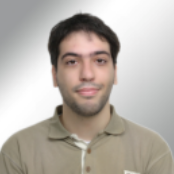
Theodoros Theodorou
Work place: Artificial Intelligence Group, Wire Communications Laboratory, Department of Electrical and Computer Engineering, University of Patras, Patras 26500, Greece
E-mail: theodorou@upatras.gr
Website:
Research Interests: Pattern Recognition, Speech Recognition, Speech Synthesis, Data Structures and Algorithms
Biography
Theodoros Theodorou was born in Athens, Greece in 1986. He graduated in 2008 (Diploma) with excellent grade from the Department of Electrical and Computer Engineering of University of Patras, Greece.
Afterwards, he was accepted as a PhD candidate at the Department of Electrical and Computer Engineering of the University of Patras. During his research activity he participated in researched programs and published articles in the domain of audio processing. His current research interests also include the domain of audio segmentation.
Author Articles
An Overview of Automatic Audio Segmentation
By Theodoros Theodorou Iosif Mporas Nikos Fakotakis
DOI: https://doi.org/10.5815/ijitcs.2014.11.01, Pub. Date: 8 Oct. 2014
In this report we present an overview of the approaches and techniques that are used in the task of automatic audio segmentation. Audio segmentation aims to find changing points in the audio content of an audio stream. Initially, we present the basic steps in an automatic audio segmentation procedure. Afterwards, the basic categories of segmentation algorithms, and more specific the unsupervised, the data-driven and the mixed algorithms, are presented. For each of the categorizations the segmentation analysis is followed by details about proposed architectural parameters, such us the audio descriptor set, the mathematical functions in unsupervised algorithms and the machine learning algorithms of data-driven modules. Finally a review of proposed architectures in the automatic audio segmentation literature appears, along with details about the experimenting audio environment (heading of database and list of audio events of interest), the basic modules of the procedure (categorization of the algorithm, audio descriptor set, architectural parameters and potential optional modules) along with the maximum achieved accuracy.
[...] Read more.Other Articles
Subscribe to receive issue release notifications and newsletters from MECS Press journals